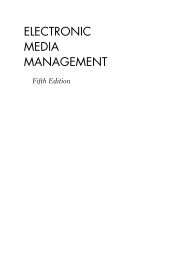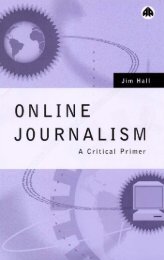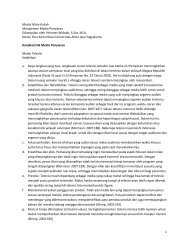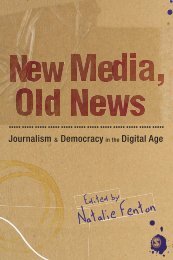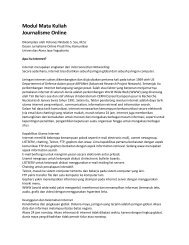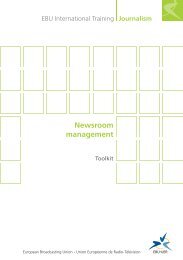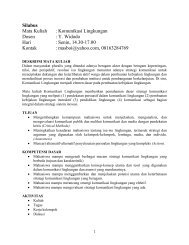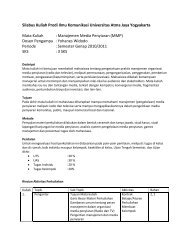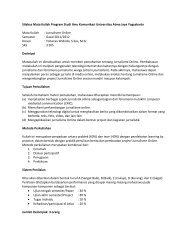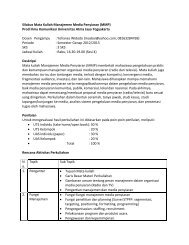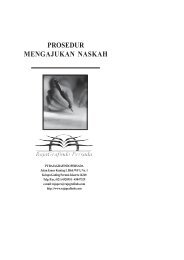1What is online journalism? - Ayo Menulis FISIP UAJY
1What is online journalism? - Ayo Menulis FISIP UAJY
1What is online journalism? - Ayo Menulis FISIP UAJY
You also want an ePaper? Increase the reach of your titles
YUMPU automatically turns print PDFs into web optimized ePapers that Google loves.
Online story construction 127<br />
web telev<strong>is</strong>ion) will become more commonplace because it<br />
makes economic sense. News <strong>is</strong> an expensive commodity to<br />
generate, so you should get it out to as many people in as many<br />
forms as possible. However, the same story will need different<br />
constructions to make it function effectively on different<br />
platforms.<br />
So, let’s recap. We’ve seen that chunking <strong>is</strong> usually (but not<br />
always) the best way to construct a story or information for <strong>online</strong><br />
consumption. We’ve also looked at criteria that guide the<br />
chunking process. But how do we construct the individual<br />
chunks? The answer <strong>is</strong> by using clean and direct writing. We may<br />
also apply a pyramid construction to give our chunks a scannable<br />
lead to summarize the content. But are there any other writing or<br />
story construction techniques that specifically suit <strong>online</strong>? Here<br />
are several to consider.<br />
Make sure each individual chunk can ‘stand alone’. People may<br />
arrive at a section of your story from another site, read it and then<br />
d<strong>is</strong>appear to another corner of the Internet without touching the<br />
rest of your story. They should be able to read a single chunk in<br />
<strong>is</strong>olation and make sense of it. Th<strong>is</strong> means you have to provide<br />
editorial as well as navigational orientation and context for your<br />
reader. Th<strong>is</strong> <strong>is</strong> more difficult than it sounds because you must also<br />
accommodate the user who works through all the chunks of your<br />
story and does not want the same context again and again. It <strong>is</strong> a<br />
little like the telev<strong>is</strong>ion text writer who writes a story over several<br />
pages but doesn’t know which page will be seen first by any single<br />
viewer. One writer <strong>is</strong> helping the reader with no control. The other<br />
<strong>is</strong> helping the reader to have total control. However, the<br />
requirement <strong>is</strong> the same.<br />
Sometimes your copy must provide more than editorial<br />
context. It must also support inadequate site navigation. As Amy<br />
Gahran points out, 5 you can be hired to provide content for a<br />
site where the framework interface does not provide readers<br />
with enough context or orientation. Your content <strong>is</strong> going to sit<br />
in the middle of th<strong>is</strong> mess. So, what do you do? She makes three<br />
suggestions:<br />
5 www.contentious.com



